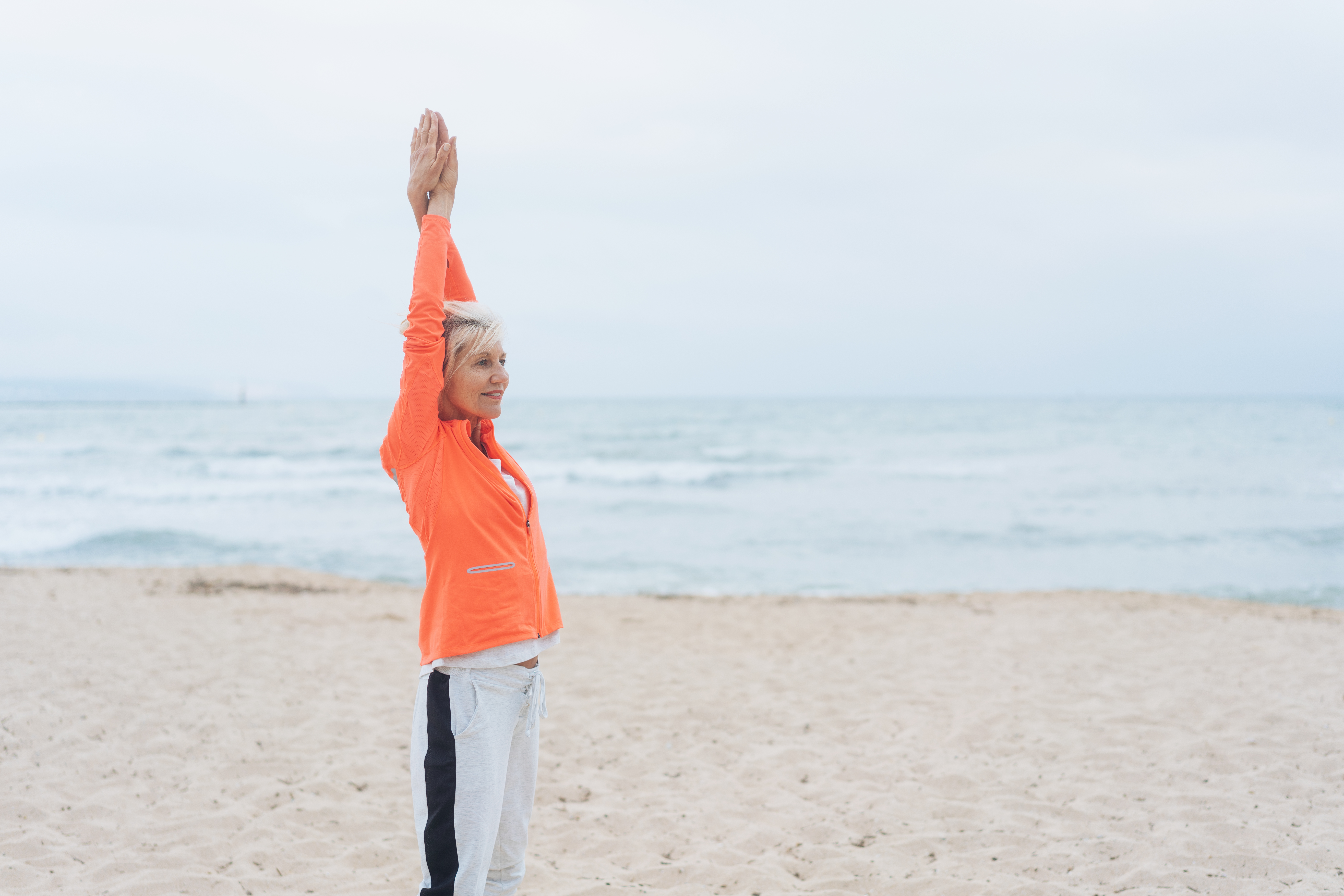How to manage back pain without pills and painkillers
These stretches for back pain will reduce your dependency on painkillers


It’s no surprise that there’s been rise in back pain recently. For many people, the shift from an ergonomic office set up to working from home, means more time hunched over a laptop.
Isolation has also led to longer hours spent slumped on the sofas. Under normal circumstances, back pain affects 39% of the UK’s population at a frequency of at least once a week, according to NHS England. However, in a survey by the Institute for Employment Studies (IES), more than half of the people polled said they were experiencing aches and pains due to being indoors. 55% of people complained of new back pain, compared to their normal physical condition.
Most people resort to taking painkillers to deal with back pain, but with these in short supply, experts advise sufferers to try regular stretching to increase mobility, reduce stiffness and improve circulation.
GP Dr Dawn Harper and physiotherapist Sammy Margo have teamed up with Mentholatum’s Mind Your Back campaign, which aims to prevent and manage back pain.
In a study of adults suffering from chronic lower back pain, stretching exercises were found to be more effective than yoga at reducing pain and improving mobility. Dr Dawn Harper says, "Mind Your Back sets out these five stretches which only take a minute or two, but will reduce stiffness, boost circulation and ease pain."
This article is for general interest and is not intended to suggest a course of action that might be suitable for you. Always consult a licensed healthcare professional before making decisions concerning your health and wellbeing.
5 stretches for back pain
#1 Spinal stretch
Feet hip width apart. Raise your arms, palms to ceiling – go slowly. Reach as high as you can comfortably. Release your breath and as you breathe out lower your arms to the side.
Sign up to our free daily email for the latest royal and entertainment news, interesting opinion, expert advice on styling and beauty trends, and no-nonsense guides to the health and wellness questions you want answered.
Repeat x2.
#2 Lateral flexion
Stand tall – slowly, slide your hand down the side of your leg. Keep the opposite shoulder down. Pause a moment and slowly come back up to centre. Then do the other side.
Repeat x2 on each side.
#3 Flex
Stand by a desk or table, feet hip width apart. Place your hands or elbows on the table to take the pressure off your back. Slowly start to arch your back as if someone was lifting you between your shoulder blades. Allow your head and neck to relax down. Tuck in your tailbone, engage your butt, hold.
#4 Extend
Drop your tummy down and dip your back. Bring your head up slowly.
Repeat the sequence x2.
#5 Rotate
Stand, feet hip width apart, clench your butt and pull your tummy in. Keep your hips facing forward and stretch your arms out. Cross your right hand over your body and place your palm on your left hip. Then take it back to where it started and take your left hand across your body to your right hip. Gradually move up the body rotating and placing your hands to your waist, then up to shoulders.
Repeat x2.
How to prevent back pain longer term
These stretches will help ease your back pain. But in the longer term, the best approach to help prevent back pain is to improve your core, abdominal strength and build up the muscles in your shoulders and lower back which support the spine. Try these five exercises…

Exercises for back pain
#1 Roll Down
Stand feet hip width apart. Engage your butt and pull your tummy in. Tuck your chin to your chest and roll down bone by bone. Let your head pull you down, let arms hang loose, take a couple of breaths. Slowly roll up into standing. Repeat x2.
#2 The Plank
Get down on all fours - hands under shoulders, knees under hips. Breathe in and engage your butt and pull in your tummy. Extend one leg back, knee lifted, then the other, so you are in a straight line from your shoulders to your ankles. Hold it for a few breaths. Repeat x2.
#3 Swimming pose
Lie face down and stretch your arms out in front of you, palms down. Engage your butt and pull in your tummy. Slowly lift your right arm and left leg off the mat, lifting your head and neck slightly keeping your gaze down while stretching diagonally. Take a couple of breaths and slowly lower your arm and leg. Then swap to your left arm and right leg. Trying to stretch a bit further each time. Repeat x2.
#4 Bridge
Lie on your back and get your feet near to your bottom arms at by your side. Engage your butt and pull your tummy in. Tip your pelvis to the ceiling and lift your tailbone off the mat and then your back, one vertebrae at a time, until there is a straight line, from your knees to your shoulders. Pause there for a few breaths and then reverse the move, lowering yourself back slowly to the mat. Keeping your pelvis tipped until your spine makes it back to the mat. Repeat x2.
#5 The 100
Lie on your back, knees bent, arms by your side and palms down. Engage your butt and pull your tummy in. Lift one leg so shin is parallel to ceiling, knee directly above hip, press back to the floor and lift other leg, head, neck, arms and gently pulse arms x 10, then turn palms to ceiling and pulse x 10. Do 100 if you can.
How to engage your muscles
Wondering how do you engage your bum or your core? Your muscles should be tight and pulling in but you should be able to breathe and move normally. Crucially, it is NOT sucking in your stomach and holding your breath.
You can practice engaging your core by feeling your ribs expand to the sides while you inhale, then as you exhale contract and zip up your abs. Think about pulling your navel up and in toward your spine as you do this. Keep breathing normally while you continue to hold your abs in.
Engaging your glutes is slightly simpler. It involves squeezing your bum muscles as part of an exercise. You should be able to breath and move normally while doing this.
Senior Health Writer Ali Horsfall has almost 15 years experience as a journalist and has written for national print titles and women’s lifestyle brands including woman&home, Woman, Woman's Own, BBC magazines, Mothercare, Grazia and The Independent. She currently specialises in health and fitness content and loves sharing the best expert advice on staying well.
